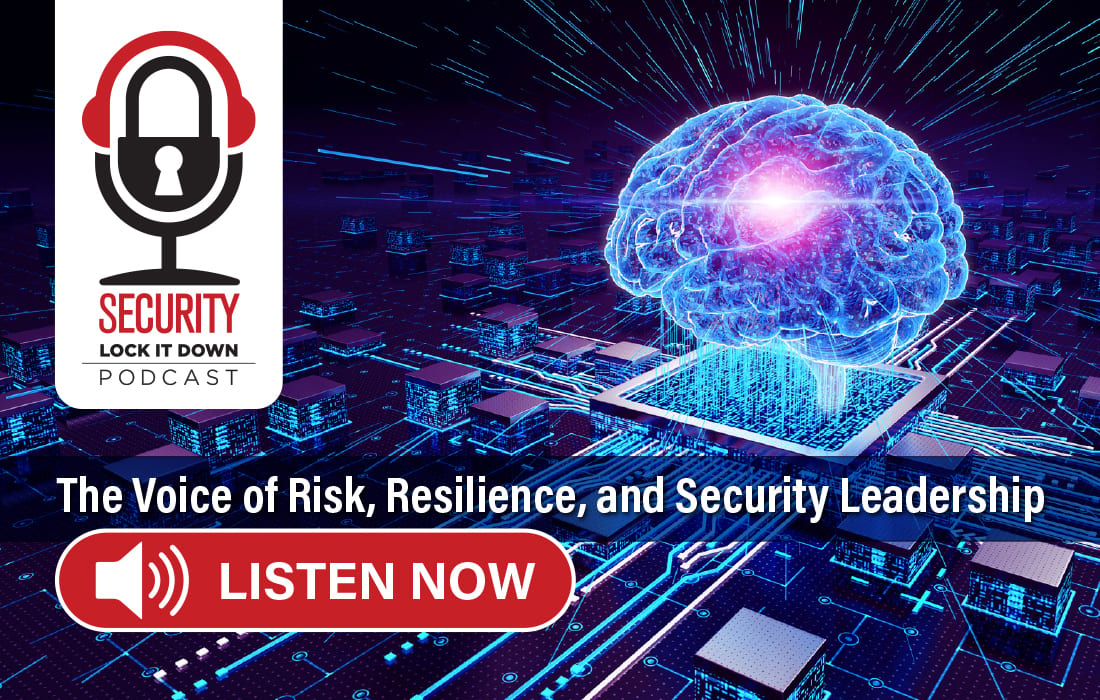september 2025


Integrated Solutions
Layered Secure Entrances Strengthen Warehouse and Supply Chain Security
The integration of layered secure entry systems can transform warehouse protection.
By Greg Schreiber, Contributing Writer

onurdongel / E+ via Getty Images
Warehouses have transformed from simple storage facilities into high-value commerce hubs that support global supply chains. As their importance has grown, so have the security and safety risks. Organizations often face a complex web of potential threats, including theft, workplace violence, liability exposure and interruptions in business operations, all of which demand smarter, more resilient security strategies.
One of the most effective and future-ready solutions lies in layered secured entry systems, using a combination of access control, security entrances, sensors and biometrics. The integration of these solutions transforms traditional access points into strategic tools designed to control flow management, deter threats, and protect everything from inventory to personnel.
Securing the Front Lines of the Supply Chain
In modern supply chains, every product that leaves a warehouse without proper authorization cuts directly into the bottom line. And when warehouses double as fulfillment centers, the volume of people and goods moving in and out amplifies the risk.
That’s why securing entry and exit points is more than a precaution, it’s a foundational element of operational integrity. Robust security entrance solutions must do more than deter threats — they must also help track movements, maintain compliance, and enhance operational efficiency at every turn.
The Role of Layered Security
Layered security takes a strategic, multi-zone approach to access control. Rather than relying on a single barrier, it creates multiple checkpoints, each designed to protect against specific vulnerabilities. Most security experts agree that the best way to mitigate threats is to stop them before they enter the facility. This starts with physical entry points.
Secured entry solutions, such as full-height turnstiles, security revolving doors, and mantraps, form the first line of defense against unauthorized access to a facility. When integrated with access control software platforms, they serve as intelligent gateways that verify identities, enforce credential validation, and precisely track and document ingress and egress activity.
Security Solutions From Entry to Exit
At the perimeter, full-height turnstiles with integrated access control prevent tailgating and unauthorized entry from parking lots or employee entrances. Video intercoms and surveillance systems add another layer of real-time monitoring.
Inside the facility, secured entry points can be used to screen employees as they arrive, requiring them to divest personal items and pass through metal detectors before accessing critical areas. Breaks and lunch periods can be monitored through controlled turnstiles that track employee movement without slowing workflow.
advertisement
advertisement
Robust security entrance solutions must do more than deter threats— they must also help track movements, maintain compliance, and enhance operational efficiency at every turn.”

At the end of shifts, randomized exit screenings — made possible through dual-lane waist-high turnstiles — create an effective deterrent against internal theft. Warehouses can funnel selected individuals into a search area while others proceed to the exit, preserving fairness while reinforcing accountability.
Finally, outbound full-height turnstiles ensure no one leaves the facility without first passing through the proper screening processes. A randomized screening process, similar to airport security, directs employees to one of two waist-high turnstiles: one for exiting and the other for a search area. All employees must then use a one-way full-height turnstile at the final exit, preventing reentry and ensuring accurate personnel movement records. This final checkpoint closes the loop on a system designed to protect every entry and exit point.
Minimizing Shrinkage Through Smarter Access Control
Secured entry solutions are uniquely positioned to target the specific problem of inventory shrinkage. By automating who enters and exits and tightly managing high-risk areas, warehouses can reduce theft from both employees and external forces.
Advanced features like biometric verification and anti-tailgating sensors allow for greater control over individual access. The addition of audit trails and system integration provides security managers with actionable data that supports investigations and improves ongoing threat mitigation strategies.
This approach mirrors tactics used in cybersecurity, where “honeypots” are placed to detect and analyze threats. In physical security, strategically securing and monitoring exit points with advanced entry systems achieves a similar effect — concentrating security resources where risk is greatest.
Protecting People: Security’s Human Factor
Security isn’t just about protecting products; it’s about keeping people safe. Concerns about workplace violence are prompting warehouses to re-evaluate how easily someone can move through a facility without authorization.
While active shooter incidents are rare, secured entry solutions can play a vital role in preventing or delaying unauthorized individuals from reaching sensitive or populated areas. Even a few seconds of delay created by a locked vestibule or security mantrap portal can give employees time to evacuate or alert authorities.
Positioning secured entry points at key transition areas — between administrative offices and the warehouse floor, for example — adds a layer of containment that can help reduce exposure to violent incidents.
Investing in Security That Pays Off
Far from being a sunk cost, secured entry solutions deliver a real return on investment. They help reduce labor costs by automating access control, improve energy efficiency by limiting unnecessary door use, and support regulatory compliance with documentation and audit trails.
Most importantly, they future-proof warehouse operations by allowing scalable integration with emerging technologies such as AI-driven surveillance, mobile credentials, and advanced analytics platforms.
Improving Warehouse Security with Layered Access Control
Warehouses sit at the heart of the supply chain, making their security mission-critical. The old ways of managing access, like manual sign-ins, unlocked doors, or minimal perimeter checks, are no longer enough. Layered access control systems provide a scalable, future-ready solution for improving physical security, reducing shrinkage, and protecting critical warehouse operations across the supply chain.
By investing in advanced entrance solutions today, warehouse operators can create safer workplaces, reduce shrinkage, and maintain the operational resilience needed to meet the demands of modern logistics.

About the Author
Greg Schreiber is Senior Vice President of Sales & Marketing at Boon Edam. Image courtesy of Schreiber



